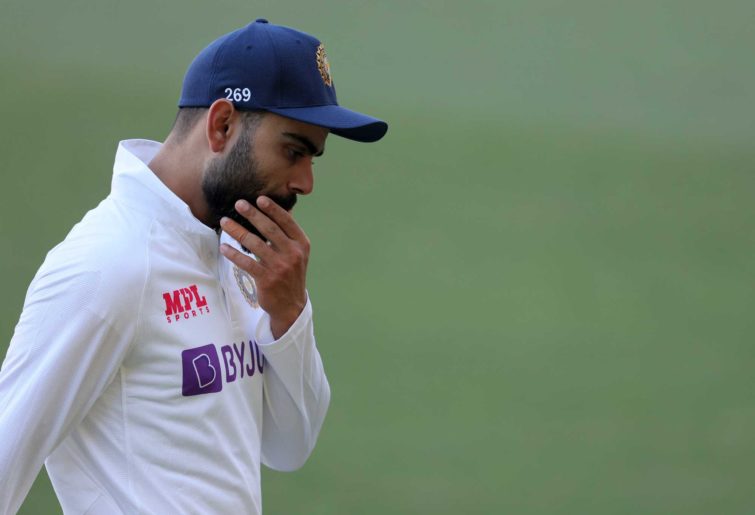WATCH; IPL bowler fuming after getting robbed of near-certain wicket by... Spider-Cam
Harshal Patel was not a happy man!
Opinion
A week back, Twitter was abuzz with a rumour that Virat Kohli would be handing over Indian white-ball team captaincy to Rohit Sharma.
I thought it was a rational decision to allow Virat to focus on his batting and let Rohit handle the pressures of multi-lateral international competitions. Much to my dismay, the rumour proved to be just that – a rumour. Virat has now put out an official notice of resignation from the post of India T20 captain with effect after the World cup T20 in UAE.
Reading that news, I felt that it was a ‘nothing’ kind of a decision.
Except for the T20 World Cup, international T20 matches series and matches lack context. These matches are forgotten as soon as they are complete, and no captain has ever come under pressure for losing one or more bilateral T20 series. What does Virat seek to achieve by giving up the least impacting format? Nothing. The reasons for his giving up T20 captaincy seems to point to something else.
Is his captaincy record bad?
As a captain, Virat has outstanding winning numbers in all forms of cricket. He has won over 65 per cent (27 out of 45) of the T20 international matches, 68 per cent (65 out of 95) in ODI cricket and 58 per cent (38 out of 65) of Tests as a captain. These are stellar numbers and see Virat as one of the most successful captains ever in world cricket.
Why, then, is he under pressure to leave the captaincy?
Virat’s dip in form?
It is no secret that Virat has gone without an international century for more than 18 months. His Test average was 19.33 in 2020 and is 29.80 to date in 2021, while in ODIs, he has maintained his high standards with an average of 47.88 in 2020 and 43 in 2021. This could be construed as a fall, given that he averaged in stratospheric levels of 133.56 in 2018 and 59.86 in 2019! In T20, he averaged 36.88 in 2020 and 115.5 in 2021.
If his drop in batting standards is the reason for quitting captaincy, Virat should have left Test captaincy. To be clear, I am not asking for it.
Rohit Sharma’s rise in the team?
Since becoming the leading run-scorer in the 2019 ODI World Cup, Rohit’s stock has grown rapidly in the Indian team. His recent metamorphosis into a successful Test opener has taken his popularity among fans to levels enjoyed only by Virat himself. Is Virat making space for Rohit in the leadership wing as a compromise?
Lack of ICC world trophies?
Finally, this is one area where Virat draws a blank as a captain. As a player, Virat played a crucial role in winning the Champions Trophy final in 2013 and was an important member of the 2011 World Cup-winning team. However, ever since he took over as captain, India has failed to win an ICC trophy.
Despite having a solid team, he has not been able to pull his team across the finishing line. Are those failures due to his lack of captaincy or plain bad luck? I reckon it is a bit of both.

How much pressure is Kohli under right now? (Photo by Daniel Kalisz/Getty Images)
The 2017 Champions Trophy final was one lousy day. India had beaten Pakistan roundly in the group stages. It took a Jasprit Bumrah no-ball, a freak innings from Fakhar Zaman on a flat pitch and a superb opening spell by Mohammad Amir to defeat the Indians. However, the other defeats were tactical mistakes from Kohli as the captain.
Ever since West Indies’ emergence as the T20 superpower in 2012, the game plan for T20 cricket is apparent. Boundary hitting is more critical than strike rotation. But India picked Ajinkya Rahane in the semi-finals to lend solidity to the team. If one reads Cricket 2.0 by Tim Wigmore and Freddie Wilde, the authors point to this as a strategic mistake and one that was made from a lack of understanding of T20 cricket.
Ajinkya scored a close to run-a-ball 45 and India ended with 194 for 2 without fully utilising the batting resources. The team management must be blamed for not understanding what matters in T20 is different from ODI cricket.
Coming to the 2019 World Cup, India looked like the best team in the group stages. However, Virat and the team management let one defeat against England destabilise the plans altogether. Kuldeep Yadav and Yazuvendra Chahal had been the team’s trump cards until that England match, where Jason Roy and Jonny Bairstow ripped them apart.
But one team lording over this pair cannot be the reason for not playing them against New Zealand in the semi-finals. The Kiwi batsmen were suspect against spin, and in that Old Trafford match, they never looked to dominate the bowling. India messed up their bowling and batting order completely and destabilised the team during the semi-finals.
All of this could be hindsight speaking, but these changes did reflect the panic that England had set into Virat’s mind.
This lack of a big tournament win is the main reason for Virat’s captaincy coming under pressure.
Upon taking over as the BCCI president, Sourav Ganguly talked about the lack of ICC trophies under Virat’s captaincy and made his concern known publicly. Otherwise, there is no case for Virat to come under pressure if one goes by match statistics.
Having said all this, it begs the question: why is Virat holding on to the ODI captaincy? If anything, it should have been a clean break from white-ball captaincy.
I think Virat has made a pre-emptive move to avoid the BCCI sacking him from the captaincy of both forms of white-ball cricket. I guess the earlier rumour on Twitter was a clever plant to force Virat’s hand.